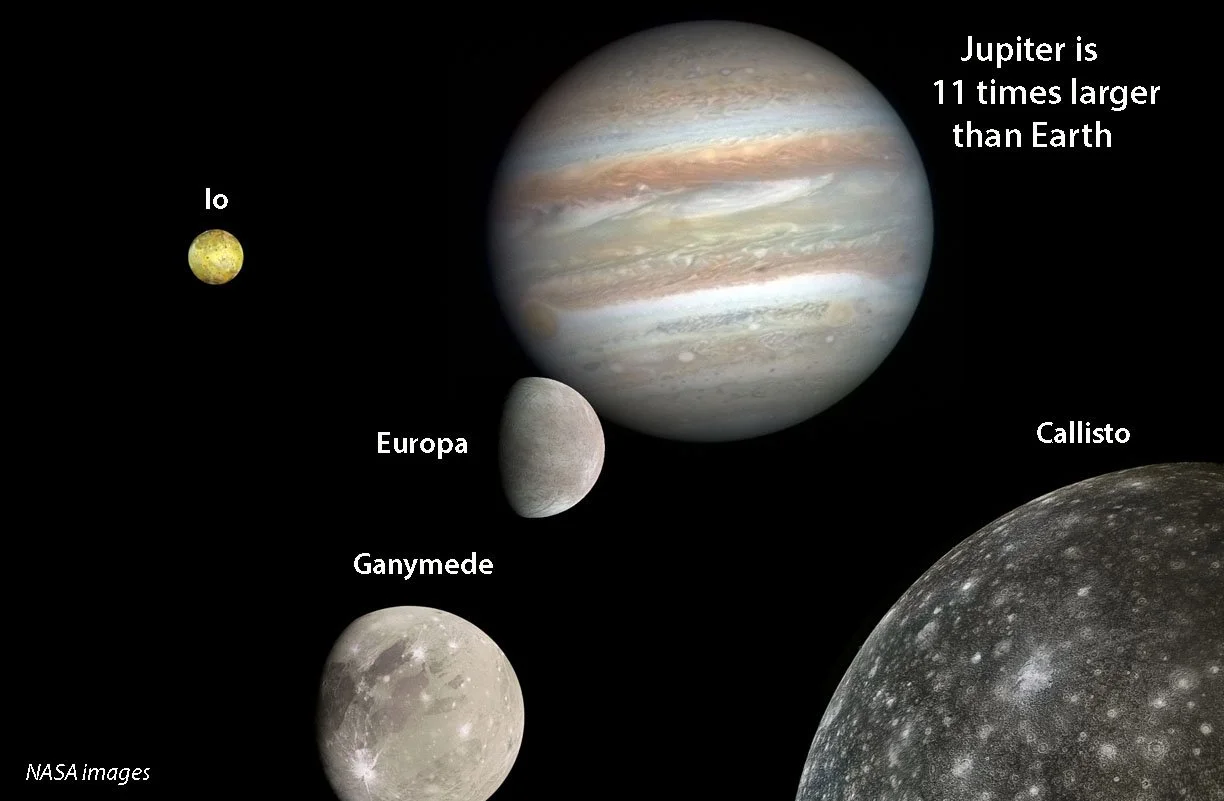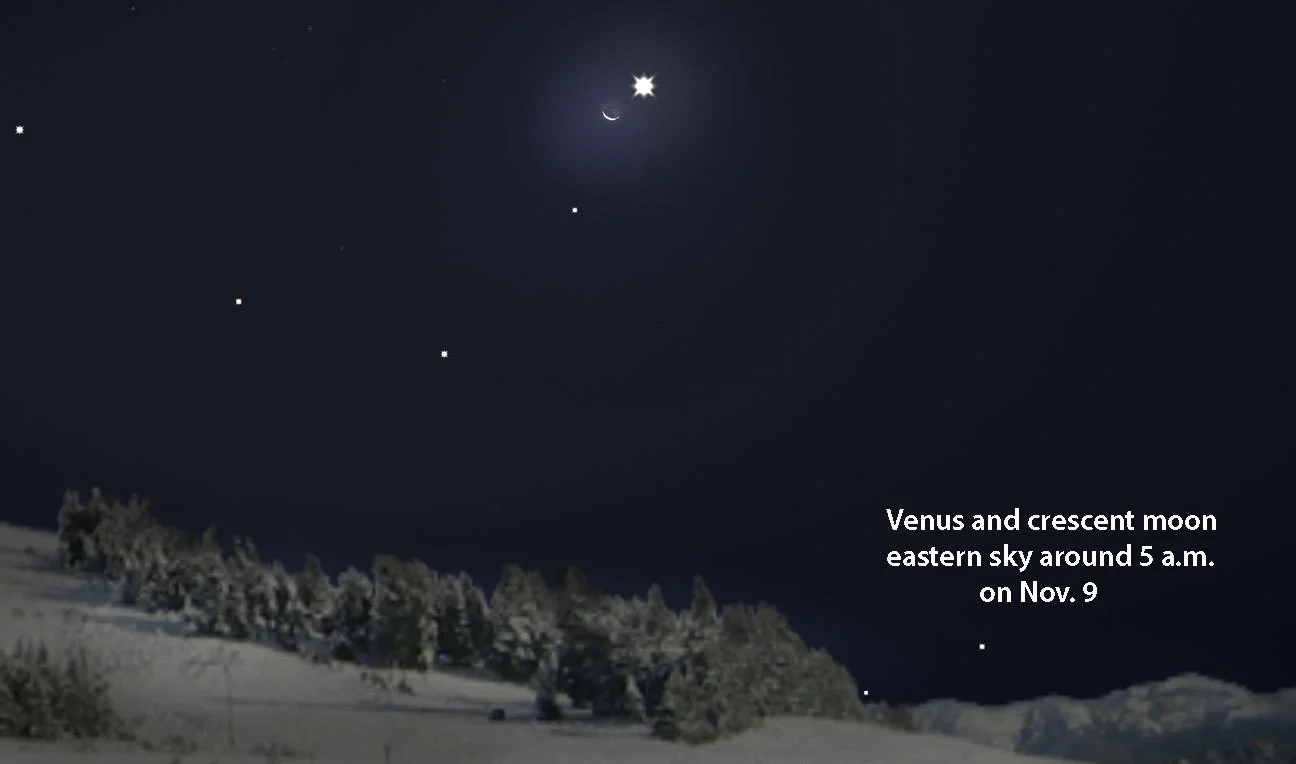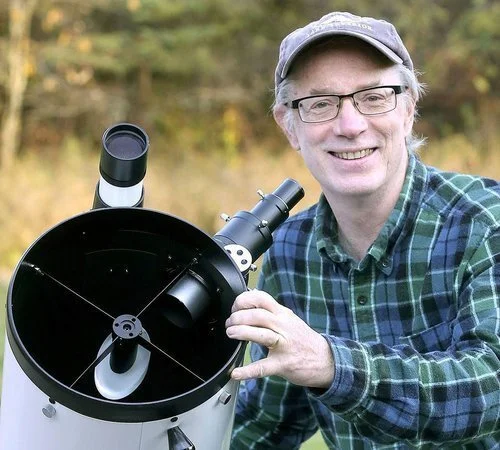November 2023 Night Sky Calendar
Saturn stands nearly due south at nightfall this month with radiant Jupiter beaming in the eastern sky. The biggest planet is in great company, sharing the sky with the twinkling Pleiades star cluster located two fists to its left. Venus dominates the morning sky shining from its perch in Virgo. Mars is in conjunction with the sun and not visible while Mercury is poorly placed for viewing.
Jupiter will glow especially bright early this month when it makes its closest approach to Earth for the year at 370 million miles or 33 light- minutes. Several minor meteor showers enliven both the evening and morning sky as does the International Space Station. Although November brings frosty nights the wildfire smoke that smudged summer and early fall skies has departed, leaving crystal-clear views of the Milky Way and stars. The month’s highlights include a wonderful close conjunction of Venus and the crescent moon at dawn on Nov. 9th .
Events
Nov. 3 – Jupiter at opposition and closest to the Earth in 2023. Rises around sunset in the northeastern sky and remains visible all night.
Nov. 1-8 (a.m.) – The International Space Station will cross the morning sky at dawn moving from west to east. It glows nearly as bright as Venus. Sign up for alerts when it passes over your location at spotthestation.nasa.gov
Nov. 3-15 – Comet Lemmon (C/2023 H2) possibly visible in binoculars from rural skies low in the western sky at the end of dusk. Check my Facebook page at facebook.com/astrobobking for a map I’ll share early in the month.
Nov. 5 – Last quarter moon. Daylight Saving Time ends at 2 a.m. local time this morning.
Nov. 6 (a.m.) – Waning moon passes 5 degrees above Regulus, Leo’s brightest star.
Nov. 9 (a.m.) – Superb conjunction of Venus and the waning crescent between about 3 a.m and dawn this morning. The two will be only about one moon-diameter apart. Look low in the eastern sky.
Nov. 5-12 – Watch for the S. Taurid and N. Taurid meteor showers to peak during this time. While weak, each produces fireballs. Meteors will stream from a spot in the sky about a fist to the left (east) of Jupiter.
Nov. 13 – New moon
Nov. 15-30 – International Space Station crosses the evening sky moving from west to east. On some nights it makes two passes, one during early twilight and the second one about 90 minutes later.
Nov. 18 (a.m.) – Leonid meteor shower peak. Best viewing time is from 2 a.m. till dawn local time with 10-15 meteors visible per hour from a dark sky.
Nov. 20 – First quarter moon. Moon shines 5.5 degrees to the left (east) of Saturn.
Nov. 24 – Waxing gibbous moon 4 ½ degrees to the right (west) of Jupiter.
Nov. 26 – Full Beaver Moon. The moon will shine just 1 degree below (east) of the Pleiades star cluster tonight. Use binoculars to see if you can still spot the cluster in the lunar glare. For your local moonrise time go to timeanddate.com/moon
Nov. 30 – Waning gibbous moon 2 degrees below (south) of Gemini’s brightest star Pollux tonight.
Bob King is an amateur astronomer, author, and passionate educator. He served as a photographer and photo editor at the Duluth News Tribune for 39 years and taught at the UMD planetarium. Bob’s work had a great impact on Voyageurs National Park. To achieve International Dark Sky Park certification, the park was required to host dark sky education events. Through the Night Sky Explorer webinars, the Conservancy was able to fulfill this component and help secure the certification for Voyageurs National Park. We can’t thank Bob King enough for sharing his talents and knowledge with the Conservancy community to support dark sky preservation.





